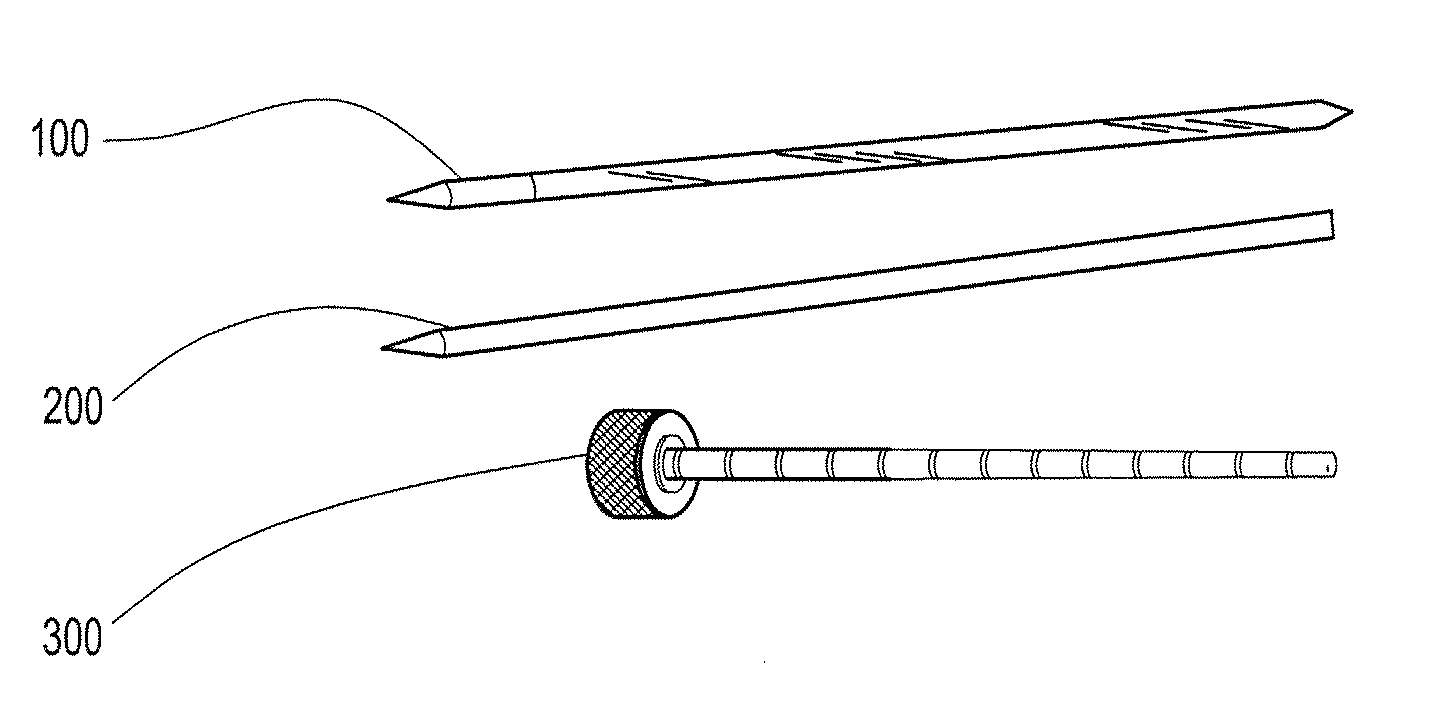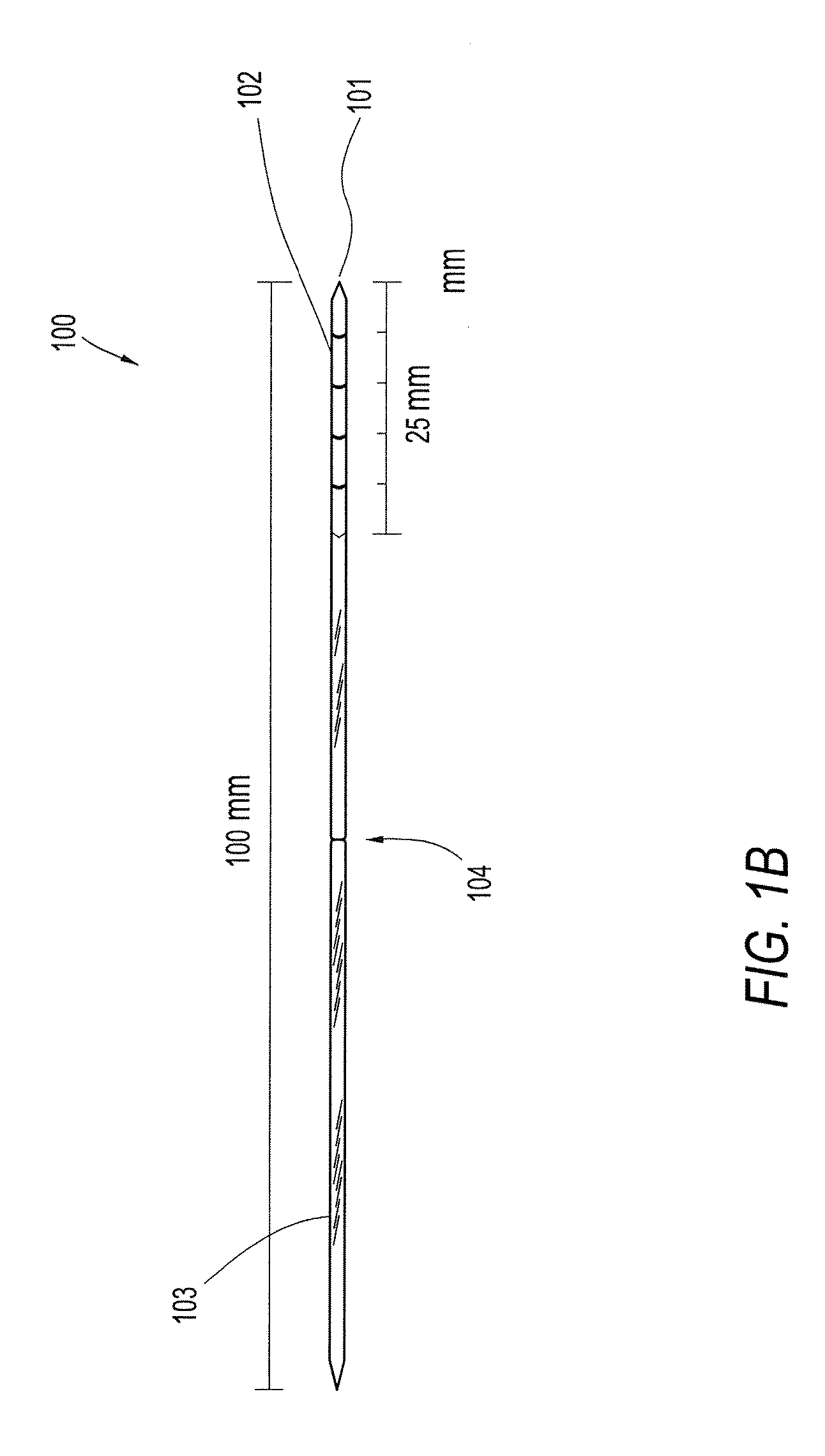Toe deformity repair using bioabsorbable pin
- Summary
- Abstract
- Description
- Claims
- Application Information
AI Technical Summary
Benefits of technology
Problems solved by technology
Method used
Image
Examples
Embodiment Construction
[0025] The present invention relates to an apparatus and surgical methods for repair of toe deformities using a bioabsorbable pin by arthroplasty or fusion of proximal, middle and distal phalanx of the toe.
[0026] The term “bioabsorbable,” as used herein, refers to materials which are absorbed by the body (human or animal) after chemical degradation, thus removing the need to surgically remove them from the body. Such materials include poly (p-dioxanone), polylactide (PLA), poly L-Lactide (PLLA), polyglycolic acid (PGA), polyglycolides, polycaprolactone, polyhydroxybutyrate (PHB), poly (orthoesters) and trimethylene carbonate polymer and the like, as well as copolymers, mixtures and / or blends of the same. The bioabsorbable materials may exhibit favorable degradation characteristics which ensure a high time zero strength that is maintained during the critical 12-week healing stage.
[0027] Referring to FIG. 1A, the present invention is carried out using a pin 100 having dimensions of ...
PUM
 Login to View More
Login to View More Abstract
Description
Claims
Application Information
 Login to View More
Login to View More - R&D
- Intellectual Property
- Life Sciences
- Materials
- Tech Scout
- Unparalleled Data Quality
- Higher Quality Content
- 60% Fewer Hallucinations
Browse by: Latest US Patents, China's latest patents, Technical Efficacy Thesaurus, Application Domain, Technology Topic, Popular Technical Reports.
© 2025 PatSnap. All rights reserved.Legal|Privacy policy|Modern Slavery Act Transparency Statement|Sitemap|About US| Contact US: help@patsnap.com



